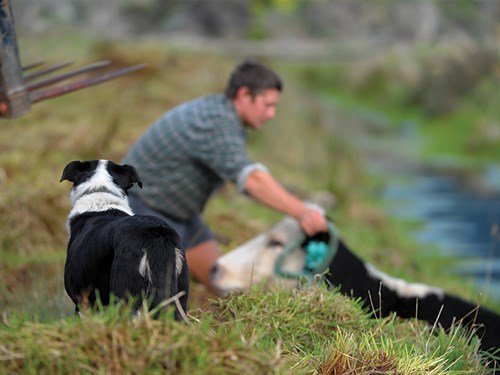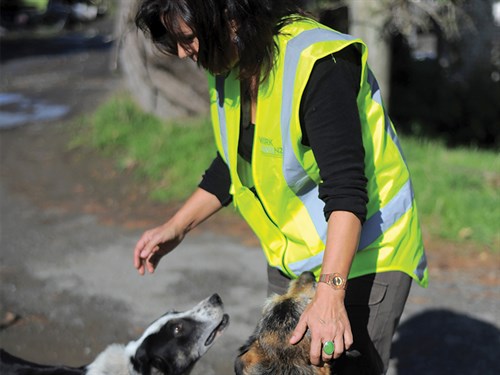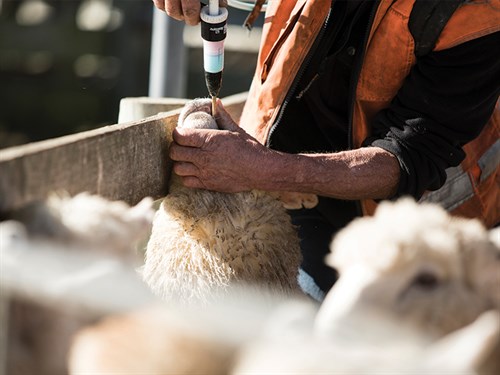Animal health: Worksafe tips for safer farming
In our first column from WorkSafe New Zealand, agriculture sector lead Al McCone discusses the critical risks that farm workers need to manage to stay healthy and safe
WorkSafe has highlighted the critical risks its four focus sectors – agriculture, forestry construction, and manufacturing – must identify and manage if the high fatality and serious injury statistics are to decrease.
The critical risks in farming are vehicles, machinery, handling animals, and burn-offs and falls. These are the hazards that most often kill and maim farmers and agriculture workers.
The first two critical risks were involved in all eight agriculture fatalities so far this year.
They are work hazards that demand concentrated attention.
It’s often the jobs experienced people do year in year out that result in injuries and deaths.
It’s not necessarily the case that the more you do something, the safer you are if you take a risk every time you do it.

It’s important to take a few minutes to run through the critical risks associated with any task you’re doing, work out what might kill or badly hurt you, and work out how to avoid that. Good risk management and following safe practices should be standard behaviour on the farm. Take a bit more time to do an in-depth audit of your farm in terms of its risk profile. If you have worked out what can kill or seriously hurt you, you can work out how to stop it happening.
If you’re looking at vehicles and machinery, you already know that well-maintained machines are less likely to go wrong, so a maintenance schedule is a no-brainer. But you also need to be thinking about some of the things people do, whether they are trained or not – perhaps they are busy concentrating on something else, in a hurry before they go out, or not expecting a vehicle to be where it is. And that’s what gets experienced people killed.
Even well-trained and experienced people make errors, so we should try to take the opportunity for things to go wrong away.
You do that by not doing the thing in the first place, or if that isn’t possible, find a different way to do it, or if that isn’t possible, have an engineering solution that protects the person. You need to be thinking – what can you put in place to stop that happening?

That’s why there are guards on PTO shafts.During this time of the year, we notice a spike in animal-handling injuries. Depending on where you’re in the country, you may be still in the throes of calving or gearing up for lambing. And before long, shearing will be underway. It’s a good time to look at animal handling in the context of critical risk management.
Of course, your normal activity will mean you know that everybody working with animals:
- is appropriately trained and experienced for what they are doing
- uses correct animal handling techniques
- knows how to avoid kick injuries
- has an escape route worked out in advance when working in the yards and
- has and wears appropriate PPE.
- For critical risk management, you should also be thinking:
- What’s the safest way to do this and do
- I need to be in with the animals?
- Can I control the animal better (e.g. a cattle crush)?
- Is there something I can put between the animal and me to avoid kicks or crushing?
Worker health can also be compromised by animal handling, as diseases transmitted by animals are a health hazard. Leptospirosis is a bacterial infection caught from the urine of infected animals. This can be through direct contact with urine or indirectly through contaminated soil or water.
According to the Ministry of Health, the number of cases in New Zealand trebled in the first half of the year compared to the same period the year before. Experts think the dramatic increase may be linked to high rainfall and resulting flooding. Of the 91 people who contracted the disease, more than 60 were hospitalised.

A mild infection causes flu-like symptoms, while more serious cases can result in months off work, long-term kidney and liver problems, fatigue, and depression. The worst cases can be fatal.
To reduce your chances of getting leptospirosis:
- make sure animals are vaccinated
- control rats and mice
- practise good personal hygiene, such as washing and drying your hands and face thoroughly after handling livestock and before drinking, eating or smoking, and keep cuts and abrasions covered
- use protective equipment provided.
As this is my first column, I would like to finish up by stressing on how important it’s
for workers to take part in discussions about on-farm hazards. Often, they’re the eyes of the business who can most often identify these risks before they cause a serious injury or death.
Under the Health and Safety at Work Act (2015), which came into force last year, business operators now have to have meaningful staff engagement so workers can participate meaningfully in health and safety planning and decision-making.

So it is something you have to be incorporating into your daily management routine. It’s heartening to hear from farming businesses that as well as better capturing of health and safety hazards, a deeper level of engagement across the business is reaping rewards in terms of efficiencies and productivity.
What’s important is that these conversations continue as risks around farming tasks need to be continually re-assessed and addressed. It’s not hard once it becomes ‘the way we do things around here’.
Keep up to date in the industry by signing up to Farm Trader's free newsletter or liking us on Facebook


.jpg)
.jpeg)

.jpg)
.jpeg)
.jpg)
.jpg)

.jpeg)
.jpg)



